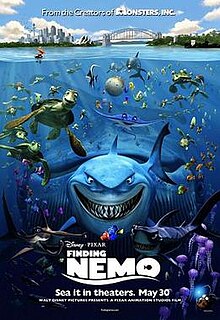Have you ever had a dream job as a child? Many kids will look around and determine that they want to be firemen, police officers, astronauts, and doctors as their dream profession. Of course, once many of them realize the kind of work required to obtain these dream jobs, most children give up on these dreams to obtain employment in something more practical. That being said, there are those select few kids who work hard at earning their dream job. Brad Bird is one of the examples of someone who made it into his dream profession. As a child, he set out to become an animator, which brought him attention and scholarships from Disney (he was even mentored by one of Disney’s best animators). The proof of his success in animation is in the films he has directed. This week’s two films highlight some of the animated and non-animated films Brad Bird has directed.
The Incredibles
Year: 2004
Rating: PG
Length: 115 minutes / 1.92 hours
After Bird had completed his education at Cal Arts (along with classmates John Lasseter and Tim Burton), he dove into the animation world. Working The Simpsons for its early seasons, Bird eventually directed his first full-length animated film: The Iron Giant (1999). Despite the film not performing well in the box office, many consider it to be an animated classic. Due to his connection with John Lasseter, Bird approached Pixar and was able to create The Incredibles (2004). This film earned him his first Oscar for Best Animated Feature. Three years later, Bird would be tapped to direct Ratatouille (2007), thus earning him another Best Animated Feature Oscar. While this was the last animated feature Brad Bird directed, he is slated to direct the sequel to The Incredibles in 2018, perhaps earning him another Oscar in the process.
Bob Parr (Craig T. Nelson) is tired of his suburban life. Trapped in a thankless job where he can’t help anyone, Bob longs for the past where he could live up to his potential as a superhero. At home, he and his wife, Helen (Holly Hunter) try to keep their identities hidden, since superheroes are now outlawed. After getting fired from his job, Bob receives an invitation to don the suit of Mr. Incredible again to assist in defeating a rampaging robot on Nomanisan Island. This change in lifestyle reinvigorates Bob, which causes Helen to suspect he is having an affair. Investigating further, she accidentally puts herself and her children in danger as they fly to the mysterious island. Once there, they must fight their way back to civilization to save the citizens of Metroville from another rampaging robot.
Mission Impossible: Ghost Protocol
Year: 2011
Rating: PG-13
Length: 133 minutes / 2.22 hours
While Brad Bird has focused on animation for much of his career, he has occasionally breached the realm of live-action films. Despite the somewhat limited abilities of live-action when compared to animation, Bird has had mixed success in the medium. His most recent foray into live-action, Tomorrowland (2015), was not very well received by critics or audiences. However, his addition to the Mission: Impossible franchise, Mission: Impossible – Ghost Protocol (2011), not only revitalized the franchise but also set a record as the most successful film in the franchise to date. With only a few films in total under Brad Bird’s belt, I would be interested to see if another live-action film were to follow in the Tomorrowland footsteps or in the more successful footsteps of Mission: Impossible – Ghost Protocol.
After breaking Ethan Hunt (Tom Cruise) out of a Moscow prison, the IMF team then proceeds to infiltrate the Kremlin to find information on someone named “Cobalt.” Unfortunately, the Kremlin is destroyed in such a way that Ethan and his team are suspected to be the perpetrators. After this incident, the “Ghost Protocol” is enacted, which means the United States will disavow any secret agents while also providing them with latitude to go after the mastermind behind the attack. Now the IMF team has tracked Cobalt to Dubai, where he plans to attack the U.S. with Russian nuclear missiles to instigate both sides into an all-out war. While Cobalt succeeds in launching a rocket from a submarine, Ethan and his team are quickly working on disabling the warhead before it destroys San Francisco.
2 sum it up: 2 films, 2 of the best by Brad Bird
Bacon #: 2 (The Incredibles / Holly Hunter -> End of the Line / Kevin Bacon)






